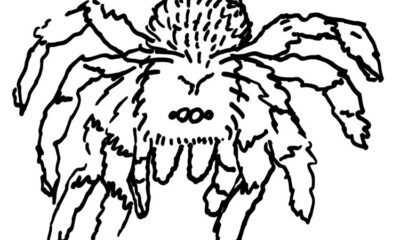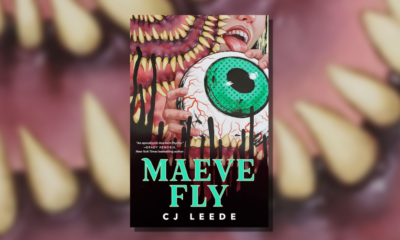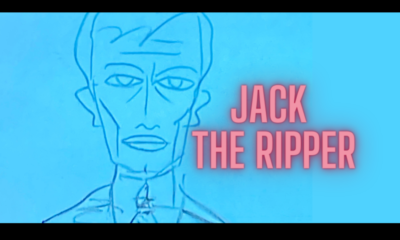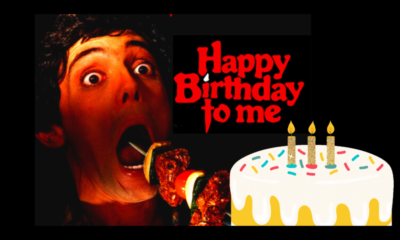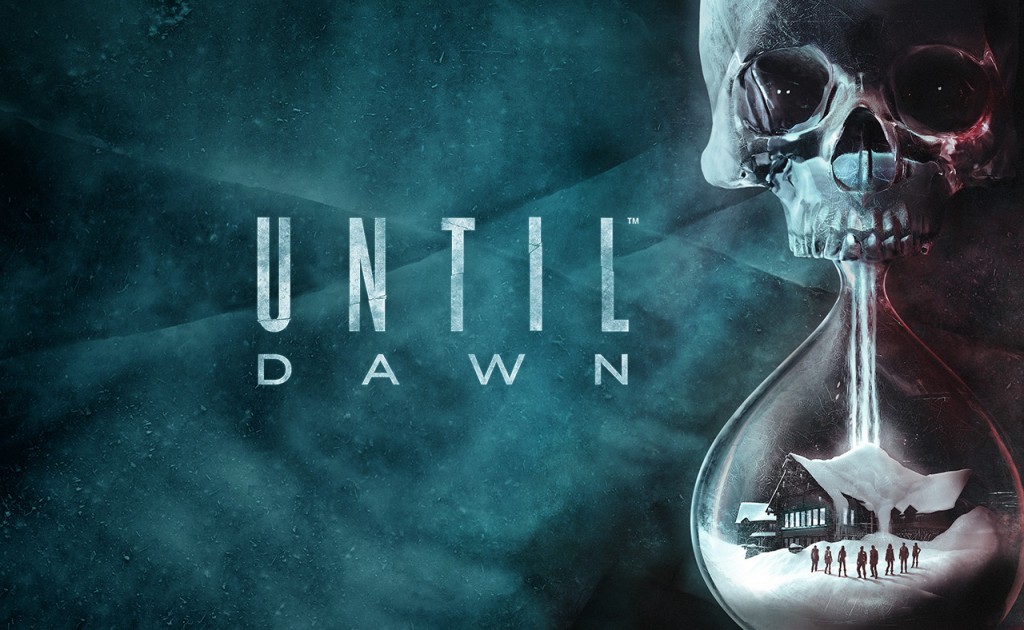
Until Dawn • A butterfly flaps its wings and Ashton Kutcher quakes
More Videos
Published
4 years agoon
By
Jake Neville
Here’s a genre of horror in gaming we haven’t touched upon yet – the interactive drama survival horror. Although, I’m not certain that it constitutes as its own genre as there are really only two games that come to mind, being 2015’s Until Dawn by Supermassive Games and Telltale’s The Walking Dead series. But if there are any more games of this design out there, please do let me know and I’ll get onto the genre police right away and have interactive drama survival horrors officially instated as an official genre with their minimum three title requirement. Either way, today we’ll be examining the PS4 exclusive Until Dawn and seeing what happens when the Goosebumps choose-your-own-adventure books that I used to hide in the school library from the other kids are made digital, injected with young adult horniness, and a lot of blood and gore.
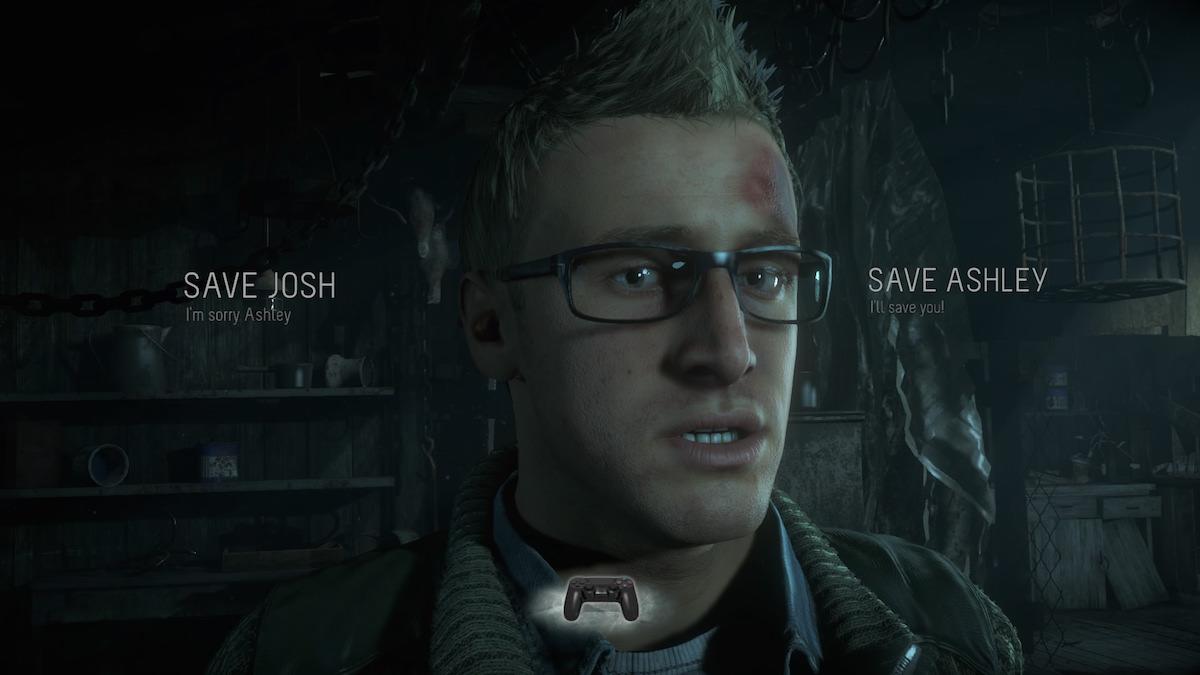
The real challenge is trying not to kill off the annoying ones
It’s hard to talk about the story without talking about the gameplay as the nature of the genre (interactive dramas are a little more common than interactive drama survival horror e.g. Detroit: Become Human) is directly built around the branching narrative thread mechanics that is its main attraction. As such no two play throughs are ever the same, as the advertisements say, due to the game’s ‘butterfly effect’ system that swears even the tiniest decisions can greatly increase and decrease the character’s chances of survivability. With that said, the main premise of the game is that a group of friends are returning to a holiday lodge on a snowy and isolated mountain one year after the accidental death of their two friends at the same lodge through bullying by said group of friends. From the get go we’re not made to like any of the characters but as the game cleverly posits you in the shoes of each of the seven characters at one time or another (sadly Rami Malek is not playable). In doing so you get to see the inner workings of their mind and how they engage with the other characters, forcing relatability. Naturally players will feel more drawn to one character over another (I personally only liked Hayden Panettiere and Mike because he was hot) and wanting to keep each character alive as they all split apart in their own storylines can be challenging. As much as the game boasts the variety of narrative threads to follow, it is rather linear in where characters can go and what they can do, and is more about finding clues along the way to keep your characters from biting the dust while trying to say the right things to get them to bang while being chased by a creepy clown murderer. The story is quite stellar in its pacing though and keeps the mystery interesting and unfolding in an intriguing way, making sure that players are always engaged.

Quicktime events are not the same thing as fun
I loathe quicktime events, as do a lot of gamers. They’re a cheap way of forcing suspense and risk by making the player press a random button at the exact right time to keep them from dying or stumbling. Until Dawn is full of quicktime event sequences that have the player choose betweeen safe and treacherous paths while escaping danger ot trying to save someone. Too many stumbles in the quicktime events and your character fails, and choose too many safe paths your character fails. Outside of these sequences a chunk of the gameplay is made up of exploration and the aforementioned gathering of clues. But what Until Dawn really brings to the table to innovate the genre (easy to do when there’s only two titles in the genre) is its adaptive horror system. Acting as prologues to each story chapter is the appearance of Peter Stormare (Fargo) as a therapist for the actual player. His purpose is to recount the events of the game, judge the player for their actions, prod them with questions about their decisions, and most importantly to create a pyschological profile of the player. The therapist will ask the player to tell them which they find scarier, spiders or snakes, scarecrows or clowns, barns or caves, knives or guns, and will change certain aspects of the main story to enhance the horror value for the player. While this is certainly welcome and a fun experiment, it isn’t implemented in any meaningful way other than some graphic changes in certain scenes i.e. the killer chases you with an uzi instead of a letter opener.

When you can’t decide, choose everything
For a game so centred on making their players meditate on their choices and regret them later for not being careful enough, the developers certainly did not share the same philosophy in putting the game together. Don’t get me wrong they clearly love the game and love horror as a whole, but the game is a bit weird and unfocused when one considers the amount of tropes and directions they’ve thrown into the title. The beginning of the game sets up a stalker slash slasher kind of thing, but then there is also a scene with a ouija board (on which I have given my opinion.) which sets up a ghost story, but then there are torture dungeons which feel like Saw, and then things start to go supernatural, and then we go to a mental asylum for reasons, and there’s a cabin in the woods too. All the different directions, plus how keen it is to change things up via the adaptive horror mechanic, leaves the game feeling a bit unrefined. Although for lovers of horror they might take it as pure fun and as a love letter. Until Dawn does also boast some top notch graphics, production design, and aural atmospheres that certainly tie the horror elements neatly together.
Until Dawn is not at all an until yawn
I’ve played this game three times, once when I was 17, another when I was 19, and another when I was 20 which actually was me watching my non-gamer friends play it together for the first time. One of the greatest things about Until Dawn is its core cinematic experience which really lends itself to players not adept at gaming mechanics or keen on contesting with a gun, approaching enemies and a health bar. It really is a lot of fun to play and its story and characters drive the experience more than anything if you push through the quicktime sequences. My only other gripe with the game is its sort of variability in narrative – if characters die it’s more likely that they just won’t show up in following scenes rather than entire narrative threads ending which limits the stakes a bit. Actually, that reminds me, for all the sluething you do to keep your characters alive and all the careful dialogue choices you make to ensure good feelings between the cast, there are a few random choices and quicktime moments that can kill your character in an instant which felt horrendously unfair (see, the final chapter). But all in all I highly recommend playing this game and can’t fault its entertainment value enough. Three Cthulhus out of five. More to be read here.

You may like
Gaming
Stygian: Reign of the Old Ones (2019), a Game Review
Stygian: Reign of the Old Ones (2019) is a tactical role-playing video game developed by Cultic Games, evoking Lovecraftian horror.
Published
3 months agoon
April 30, 2024
Stygian: Reign of the Old Ones (2019) is a tactical role-playing video game developed by Cultic Games, evoking Lovecraftian and cosmic horror. Published by Fulqrum Publishing, this game is available through Linux, macOS, and Windows. This review will cover the $19.99 Steam release.
The Great Old Ones have awakened, exiling Arkham after the events of Black Day. Design your character and face the abominations of Arkham. Explore the 1920s through a Lovecraftian aesthetic as you unravel the secrets that plague Arkham, facing unknowable cosmic horror and malicious abominations.
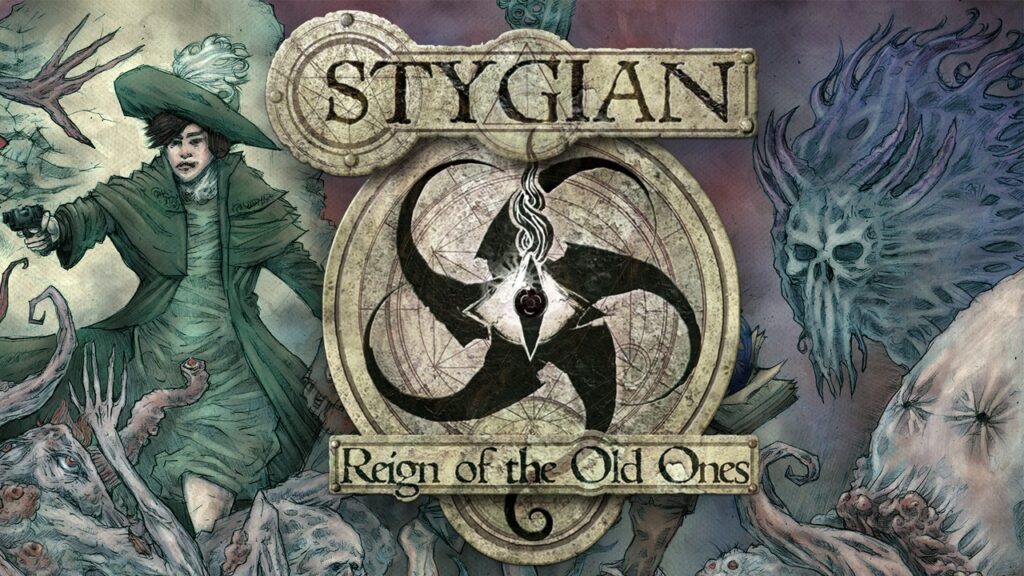
What I Like Stygian: Reign of the Old Ones
The depth of character creation starts the game off on the right foot. While appearance has various options, the game provides greater variety in motives, age, and origins, adding different gameplay elements. For example, age reflects lived experience and physical competency. The younger your character, the less experienced but more physically capable. This dynamic requires trial and error to find the best choice for you.
The paper cutout art provides a unique interpretation of a familiar (but stylish) Lovecraftian aesthetic. While not the most haunting execution of the Lovecraftian, it still manages to unsettle and unnerve while maintaining visual interest. That said, if the style doesn’t suit the player’s taste, Stygian: Reign of the Old Ones might leave that player wanting.
While I find the story engaging and the mysteries worth exploring, there’s a massive caveat to that claim. Regardless, if you fancy the Lovecraftian, few care as deeply and express as much knowledge of the genre as Cultic Games in this installment. This love and knowledge shines through in the often subtle allusions and references to the expanded universe. It may earn its place as the most Lovecraftian game out there.
The characters vary in interest and likability, but there’s usually something about them to add to the overall mystery. Naturally, this remains most evident in the companions that accompany the player on their journey.
In terms of horror, Stygian: Reign of the Old Ones achieves notable success. Despite the subjective points of aesthetics, the game brings out the most unsettling and uncomfortable elements of Lovecraftian and cosmic horror.
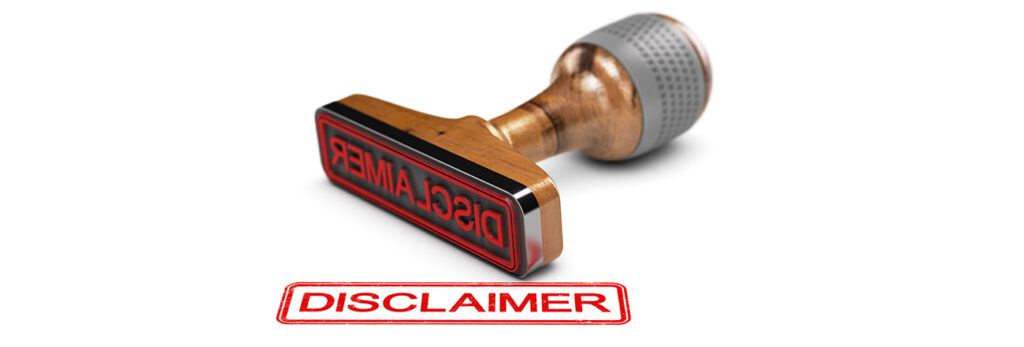
Tropes, Triggers, and Considerations
With an understanding of the Lovecraftian comes the question of how to deal with racism. Most properties try to remove this context, but Stygian: Reign of the Old Ones recognizes the text and era (the 1920s) with caricatures such as a lunatic in blackface. I won’t say it fully explores these toxic elements, but it’s not painted in a positive light.
Insanity and mental illness play a large role in the mechanics of the game, such as becoming a key component of casting spells. Loosely related, drug addiction and usage are mechanics with varying degrees of necessity depending on your build.
If these are deal breakers, perhaps give Stygian: Reign of the Old Ones a skip.

What I Dislike about Stygian: Reign of the Old Ones
In terms of story, this game is unfinished, leaving many plots, quests, and arcs with unsatisfying cliffhangers. My understanding is that Cultic Games planned to finish the game, but money ran out, and the focus shifted to an upcoming prequel. I imagine the goal is to use this new game to support a continuation. But that doesn’t change the unfinished state of Stygian: Reign of the Old Ones. The beginning and middle remain filled with content, but the final act (loosely stated) falls monstrously short.
While this unfinished state mostly affects content, I did run into game-breaking bugs. From my understanding, these bugs completely hinder progress. Most are avoidable, but some are unlucky draws.
It’s these points that make this a challenge to recommend, requiring the potential player’s careful consideration.
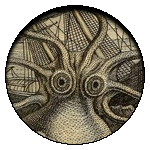
Final Thoughts
Stygian: Reign of the Old Ones accomplishes what many games fail, bringing to life the Lovecraftian. Unfortunately, this game falls short at the end and leaves game-breaking bugs as potential deterrents for full enjoyment. If what you read above entices you, it may be worth the investment. However, it’s unfair to recommend this game within its compromised state.
Gaming
Ashen (2018), a Game Review
Ashen (2018) is a souls-like action RPG developed by A44 and published by Annapurna Interactive available across all platforms.
Published
3 months agoon
April 30, 2024
Ashen (2018) is a souls-like action RPG game developed by A44 and published by Annapurna Interactive. This game provides a single-player and multiplayer experience with passive multiplayer mechanics. For this review, I am discussing the 39.99 Steam release, but it’s also available in the Epic Game Store, Xbox, Nintendo Switch, and PlayStation.
In this bitter world, your character seeks to make a home for yourself and others. This goal requires you to fight for every inch of land, building connections and alliances to maintain a thriving village. Venture further to make the world a more hospitable place, but know the further you travel, the greater the threats.

What I Like about Ashen
In 2017, Ashen earned a nomination for the Game Critics Awards’ “Best Independent Game.” It would later earn several more nominations in 2019. At the National Academy of Video Game Trade Reviewers Awards, it received nominations for “Game, Original Role Playing” and “Original Light Mix Score, New IP.” It was nominated for “Most Promising New Intellectual Property” at the SXSW Gaming Awards. Finally, at the Golden Joystick Awards, it earned a nomination for “Xbox Game of the Year.”
The multiplayer experience remains essential for Ashen, focusing on you and a partner venturing together to explore an open-world environment. However, the single-player experience is my focus and the game accounts for this gameplay. Ashen often pairs you with a villager who helps with the challenges.
The art style remains a plus throughout the gameplay. Though muted in colors and lacking finer details, the style creates a unique world that allows players to get lost along their journey. If the aesthetic doesn’t evoke that curiosity, then Ashen becomes hard to recommend.
Vagrant’s Rest and the inhabitants remain a strong incentive to continue on your journey. Seeing the progression of the town and building connections with the people provide the most rewarding experience.
In terms of horror, the art style often evokes an eerie atmosphere. However, I won’t go so far as to say the game is haunting. Instead, it evokes emotions that can unsettle and unnerve the gamer.

Thoughts and Considerations
The souls-like influence remains straightforward. Progression requires the player to defeat enemies and collect currency for weapons or certain item upgrades. Ashen simplifies and focuses its gameplay, reducing variety to polish its choices. The gameplay remains fluid, with a few hiccups that might be a computer issue.
If you prefer magic or defined classes, the gameplay doesn’t enable this variety. Item upgrades and choices define your playstyle, allowing most items to be playable at any stage of gameplay.
Weapons make a greater difference in playstyle. Most of these differences are self-evident (i.e. blunt weapons are slower but stun), but upgrades make any weapon viable. You pick an aesthetic and function, sticking with it until something better catches your eye.
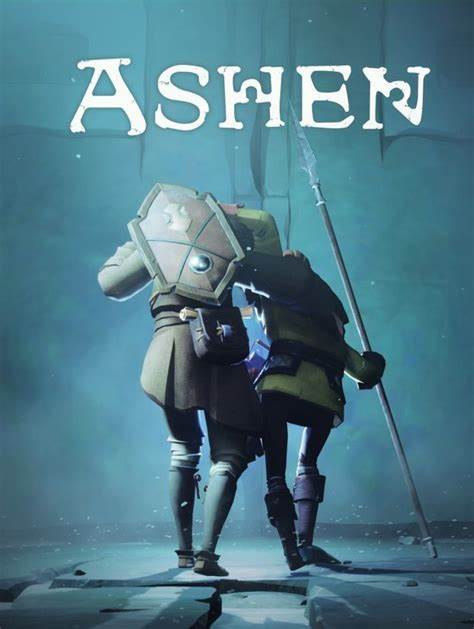
What I Dislike about Ashen
As mentioned, the game had some technical issues. I often assume this to be my computer, but I did note a few others mentioning similar issues. The gameplay remains fluid, so take this comment as a small point of consideration.
With limited roleplay options, liking the characters or art style remains essential for your time and money investment. As mentioned, the game doesn’t hold the variety of FromSoftware, which means their selling point comes from that unique art style and world.
Passive multiplayer is a major part of the marketing for Ashen. While I don’t mind this mechanic, 6 years after release reduces the overall impact. When so few wanderers appear in your game, it’s hard to see the overall appeal.

Final Thoughts
Ashen delivers a highly specialized souls-like experience, preferring to perfect what it can at the cost of variety. If the art appeals and the thirst for a souls-like has you wanting, Ashen stands as a strong contender. However, there are many contenders which make this hard to overtly recommend.
Gaming
I Have No Mouth, and I Must Scream (1995), a Game Review
I Have No Mouth, and I Must Scream (1995) is a point-and-click horror game based on Harlan Ellison’s award-winning short story.
Published
3 months agoon
April 29, 2024
I Have No Mouth, and I Must Scream (1995) is a point-and-click horror game based on Harlan Ellison’s award-winning short story of the same name. Developed by Cyberdreams and The Dreamers Guild, this adaptation brings a new perspective to a familiar story. I heard of free purchasing opportunities for this game but cannot verify the quality. For this review, I played the 5.99 Steam release.
Play as one of the remaining humans on earth: Gorrister, Benny, Ellen, Nimdok, and Ted. Each faces a unique challenge from their common torturer, the AI supercomputer known as AM. Chosen by AM to endure torment, these challenges require the participants to face their greatest failures and tragedies.
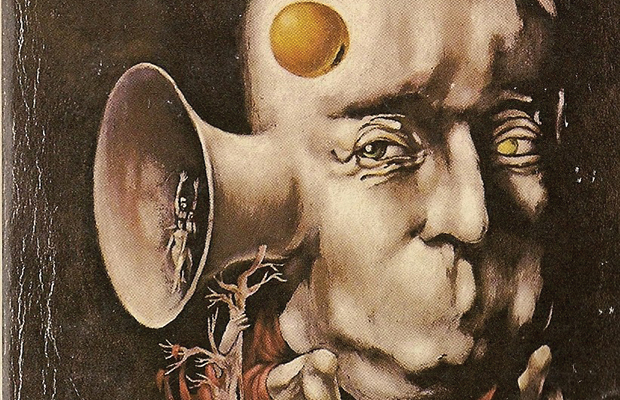
What I like about I Have No Mouth, and I Must Scream
Having experienced this story a few times, Harlan Ellison provides the most substantive execution of his vision and moral questions in this game. While all have individual merits, I assume the added content and context better dive into the relevant points he hoped to explore. He also played the voice of AM, giving us the emotional complexity of the machine as he saw it.
As the above comment indicates, I Have No Mouth, and I Must Scream remains a faithful adaptation with only one notable change. While that one change does reflect in that character’s journey, it uses that opportunity to the fullest. Where the short story left room for potentially inaccurate interpretations of the characters, this added context makes us better understand them.
The game’s writing remains a selling point for this story-driven experience. It dives further into the lore of the human characters and even allows further development of AM in the process. There are many ways to progress, and the multiple characters allow gamers to adventure further if stuck. That said, progressing individual characters to complete their journey remains essential for the true ending and experience.
As a point-and-click game made in 1995, I Have No Mouth, and I Must Scream holds up well. In many ways, it pushed the genre in its time with dynamic storytelling and game features. Harlan Ellison was someone who pushed boundaries to challenge himself and others. He saw the gaming industry as another opportunity to evoke story-driven art, a focus reflected here.

Thoughts, Triggers, and Considerations
I Have No Mouth, and I Must Scream adapts a dark and bleak story from an author notorious for his dark material. This game is no exception to that standard. Mental illness, sexual assault, genocide, and torture envelop the game. These elements are handled with attention but remain triggering to those sensitive to such dark material.
If these are deal breakers, I Have No Mouth, and I Must Scream will likely earn a skip.
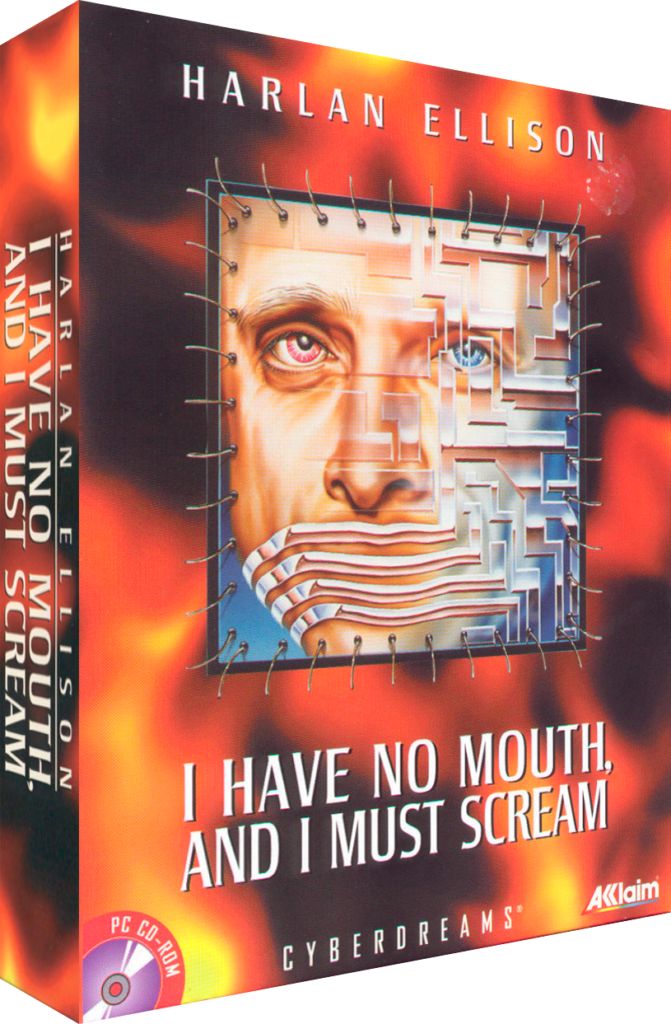
What I Dislike, or Considerations, for I Have No Mouth, and I Must Scream
While the short story remains a haunting example of fiction in every sentence, I Have No Mouth, and I Must Scream doesn’t evoke the same tension. It allows room to breathe or refocus on another character, which reduces the horror such a story evokes. While the characters participate in their torment, the loss of agency and hopelessness doesn’t translate in the execution.
Some mechanical and gameplay issues are noteworthy. For example, the saving mechanic remains dated, piling up if you save often or for specific reasons. Most of the mechanical issues stem from outdated UI from a gamer of a more modern era. Play it long enough, and elements start to click, but it needs that user investment.
Point-and-click caters to a niche audience, so modern gaming audiences aren’t inherently the demographic. The puzzle-solving and gameplay won’t win you over if the genre isn’t to your taste. Even within the genre, many of the puzzles remain challenging. For fans of the genre, this likely earns a positive merit. For those looking to continue the short story, this challenge will prove an obstacle.

Final Thoughts
I Have No Mouth, and I Must Scream provides a new opportunity for the award-winning story to reach new audiences and continue to grow. Not satisfied with repeating his story in a new medium, Harlan Ellison expands this bleak world through the point-and-click game. While not as haunting as the short story, this game provides the most context and development of any adaptation before it.



